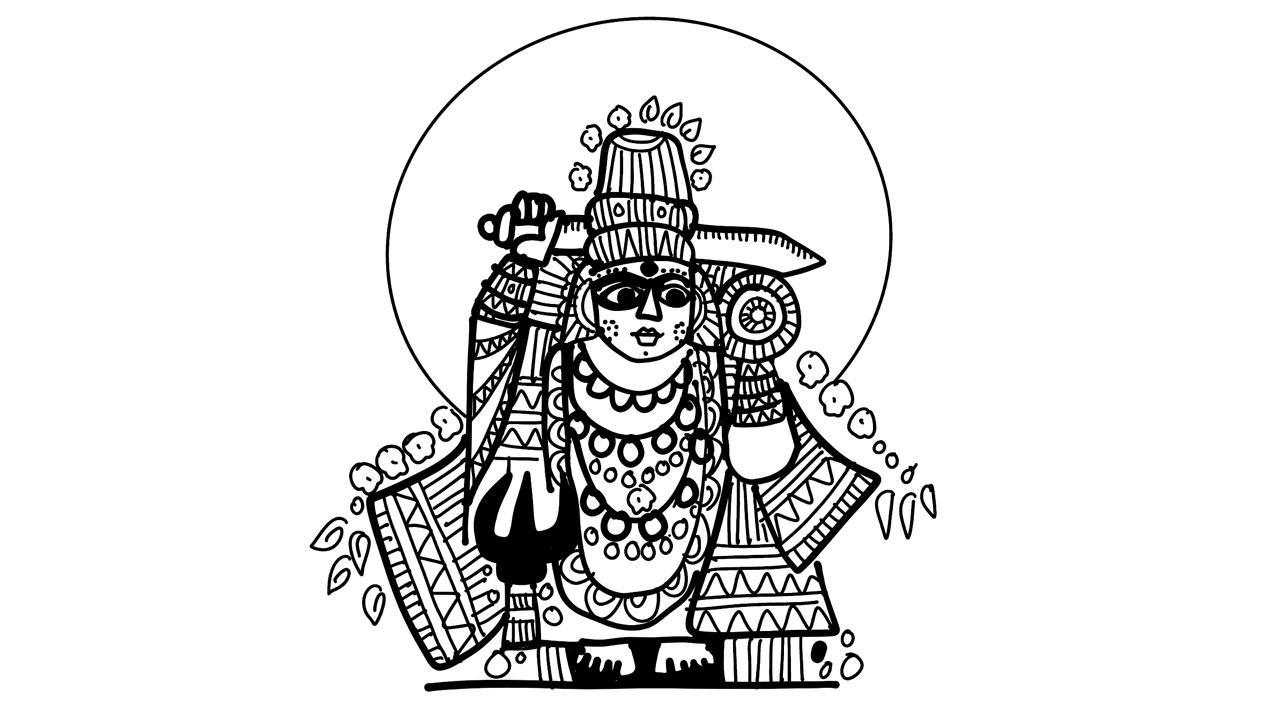She chose Indra instead and so is called Indrani. As the husband of Sachi, Indra is called Sachin or Sachindra

Illustration/Devdutt Pattanaik
 There is one temple of Sachi, wife of Indra. And it is a Jain-Hindu temple, located in Osian, Rajasthan, near Jodhpur, where she is revered as clan goddess of local Jains, Rajputs and other communities.
There is one temple of Sachi, wife of Indra. And it is a Jain-Hindu temple, located in Osian, Rajasthan, near Jodhpur, where she is revered as clan goddess of local Jains, Rajputs and other communities.
ADVERTISEMENT
In the Veda, Sachi is the wife of Indra. Not much is known about her until post-Vedic, and even Buddhist, literature. Here we learn that she was the daughter of an asura called Puloma, who didn’t want to marry the commander Vritra, who was defeated by Indra. She chose Indra instead and so is called Indrani. As the husband of Sachi, Indra is called Sachin or Sachindra.
But in local traditions of Osian, she is closer to Durga, fighting buffalo-demons and eating meat, crunching bones, drinking blood, until she encounters a Jain saint known as Ratnaprabhasuri who convinces her to eat sweets instead. The crackling sound of sweets reminded her of the cracking sound of bones, say some, and that was enough to make her happy. Today, devotees offer her sandalwood (chandan) and saffron (kesar) to cool her fiery temperament.
A recurring theme in Jain mythology is that of goddesses giving up their love for meat and blood, and under the influence of a Jain monk or merchant, accepting sweets instead. To appreciate this, we must understand that in ancient India, the goddess was associated with blood sacrifice.
Images of goddesses battling buffaloes come to India from the Kushana period (100 CE). The buffalo was associated with the asura who tries to control the goddess, and the goddess impales him with her trident. This story comes from the Devi Mahatmya (600 CE). Across India, atop mountains and in caves are images of multi-armed goddesses riding lions and tigers and battling the buffalo demon. Some believe this image has an association with early fertility cults. In some stories, the buffalo is both her husband and her son—the husband has to die when the son is born, and this is believed to be symbolic of the end of the old year and beginning of the new year.
Also read: The surgical mom
Be that as it may, goddess temples across India are worshipped by warrior clans and she is offered the blood of goats, sheep, and buffalo in festivals. The image of the goddess is smeared with the blood of sacrificed animals and the meat is cooked and distributed among her followers. However, in the Jain traditions, and increasingly many Hindu traditions, these goddesses transformed. Instead of chewing on bones and corpses, or drinking blood, they transform into goddesses who prefer sweetmeats, instead.
In Jain traditions, fierce goddesses protect Jain Tirthankara, who present Jain wisdom to the world. In Osian, there is a Mahavir temple linked to Sachiya Devi. The story goes that the image of the Tirthankara was accidentally damaged by local ignorant Jains, and so Jains were asked to leave the city. This may have happened several hundred years ago, as the temple is dated to 8th century and renovated in the Maru-Gurjara style in the 12th century.
Today, Oswal Jains visit the temple of Mahavir and the goddess at Osian, when they start a new business or get married. Women are also not allowed into the shrine. No Jain stays in the city overnight, nor takes any offering home. Such stories remind us of the intersection of the Hindu and Jain faiths that thrived in trade routes of Western India.
The author writes and lectures on the relevance of mythology in modern times. Reach him at devdutt.pattanaik@mid-day.com
 Subscribe today by clicking the link and stay updated with the latest news!" Click here!
Subscribe today by clicking the link and stay updated with the latest news!" Click here!







